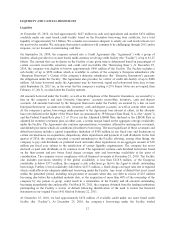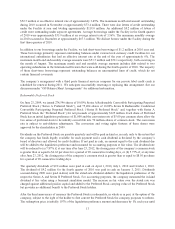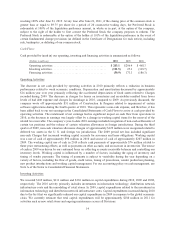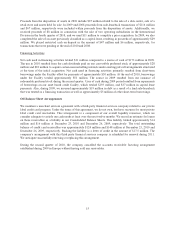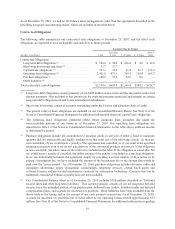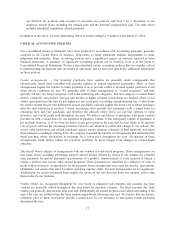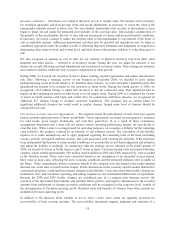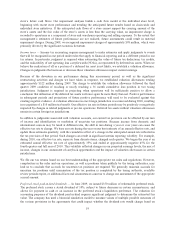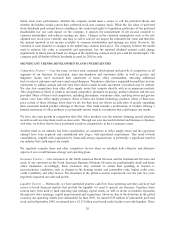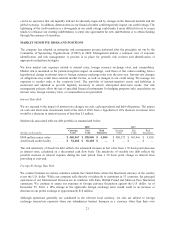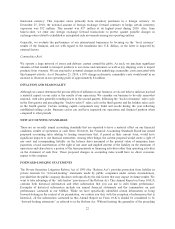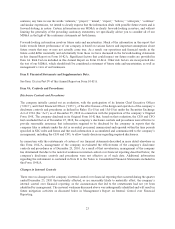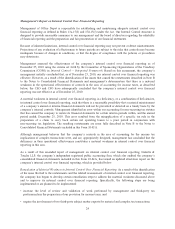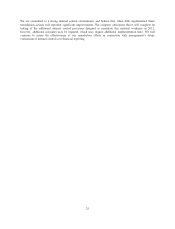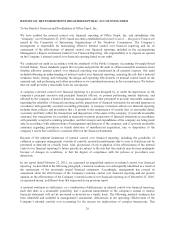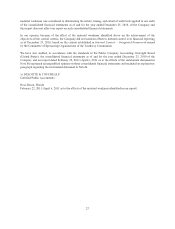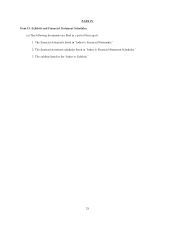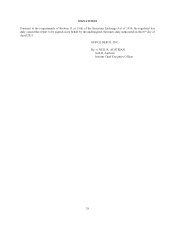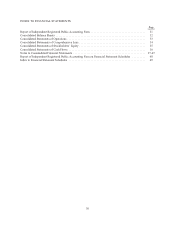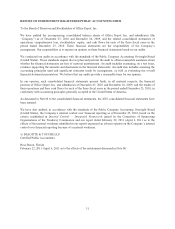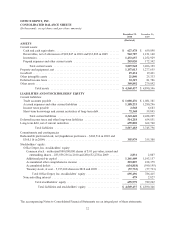Office Depot 2010 Annual Report Download - page 23
Download and view the complete annual report
Please find page 23 of the 2010 Office Depot annual report below. You can navigate through the pages in the report by either clicking on the pages listed below, or by using the keyword search tool below to find specific information within the annual report.functional currency. This exposure arises primarily from inventory purchases in a foreign currency. At
December 25, 2010, the notional amount of foreign exchange forward contracts to hedge certain inventory
exposures was $52 million. This amount was $57 million at its highest point during 2010. Also, from
time-to-time, we enter into foreign exchange forward transactions to protect against possible changes in
exchange rates related to scheduled or anticipated cash movements among our operating entities.
Generally, we evaluate the performance of our international businesses by focusing on the “local currency”
results of the business, and not with regard to the translation into U.S. dollars, as the latter is impacted by
external factors.
Commodities Risk
We operate a large network of stores and delivery centers around the globe. As such, we purchase significant
amounts of fuel needed to transport products to our stores and customers as well as pay shipping costs to import
products from overseas. We are exposed to potential changes in the underlying commodity costs associated with
this transport activity. As of December 25, 2010, a 10% change in domestic commodity costs would result in an
increase or decrease in our operating profit of approximately $4 million.
INFLATION AND SEASONALITY
Although we cannot determine the precise effects of inflation on our business, we do not believe inflation has had
a material impact on our sales or the results of our operations. We consider our business to be only somewhat
seasonal, with sales generally trending lower in the second quarter, following the “back-to-business” sales cycle
in the first quarter and preceding the “back-to-school” sales cycle in the third quarter and the holiday sales cycle
in the fourth quarter. Certain working capital components may build and recede during the year reflecting
established selling cycles. Business cycles can and have impacted our operations and financial position when
compared to other periods.
NEW ACCOUNTING STANDARDS
There are no recently issued accounting standards that are expected to have a material effect on our financial
condition, results of operations or cash flows. However, the Financial Accounting Standards Board has issued
proposed accounting rules relating to leasing transactions that, if passed in their current form, would have
significant impacts to our financial statements. Among other things, the current proposal would create a right of
use asset and corresponding liability on the balance sheet measured at the present value of minimum lease
payments, record amortization of the right of use asset and implied interest of the liability on the statement of
operations and characterize a portion of the lease payments as financing activities rather than operating activities
on the statement of cash flow. These proposed changes in accounting rules would have no direct economic
impact to the company.
FORWARD-LOOKING STATEMENTS
The Private Securities Litigation Reform Act of 1995 (the “Reform Act”) provides protection from liability in
private lawsuits for “forward-looking” statements made by public companies under certain circumstances,
provided that the public company discloses with specificity the risk factors that may impact its future results. We
want to take advantage of the “safe harbor” provisions of the Reform Act. This Annual Report on Form 10-K/A
contains both historical information and other information that you can use to infer future performance.
Examples of historical information include our annual financial statements and the commentary on past
performance contained in our MD&A. While we have specifically identified certain information as being
forward-looking in the context of its presentation, we caution you that, with the exception of information that is
historical, all the information contained in this Annual Report on Form 10-K/A should be considered to be
“forward-looking statements” as referred to in the Reform Act. Without limiting the generality of the preceding
22


